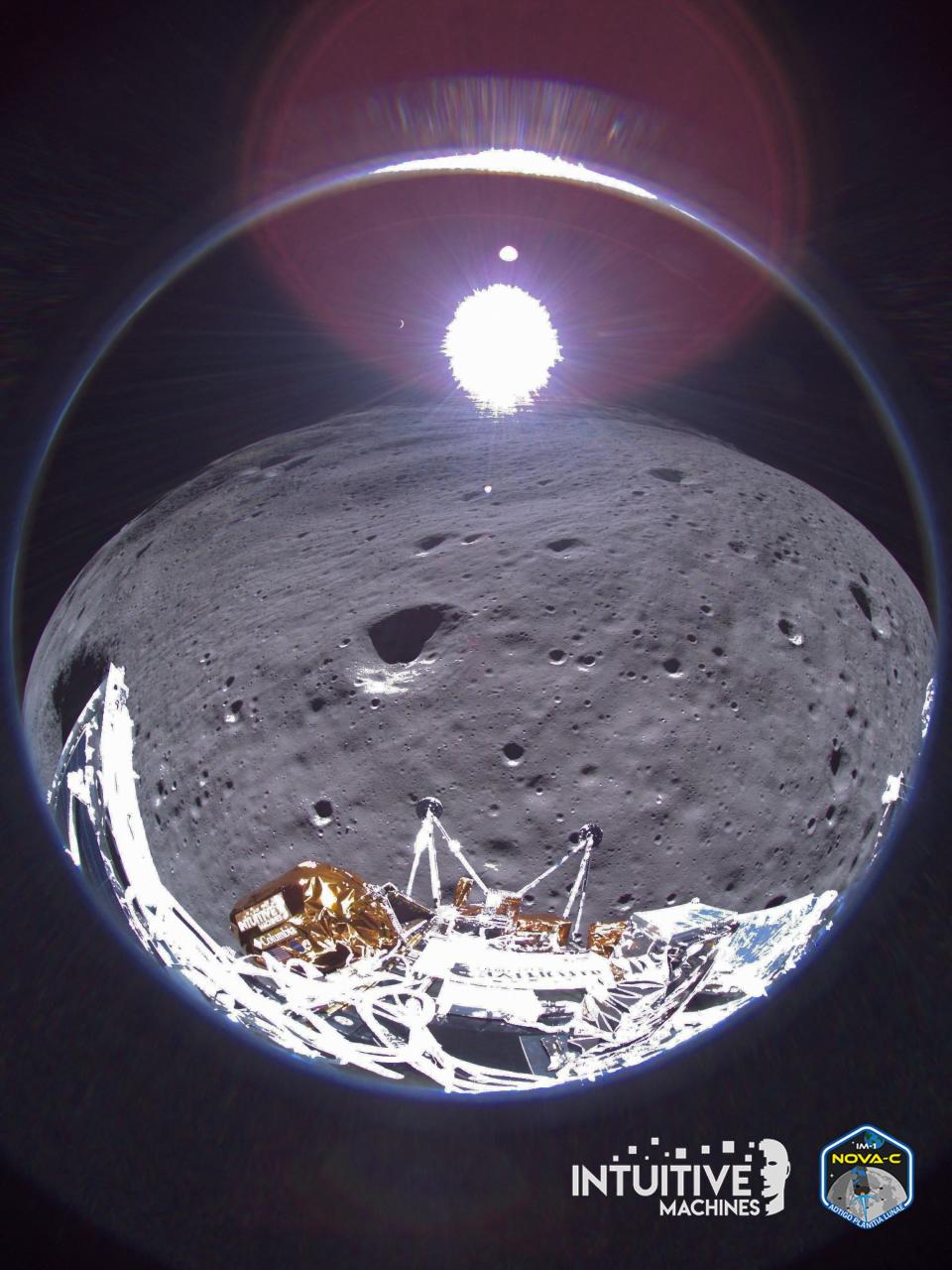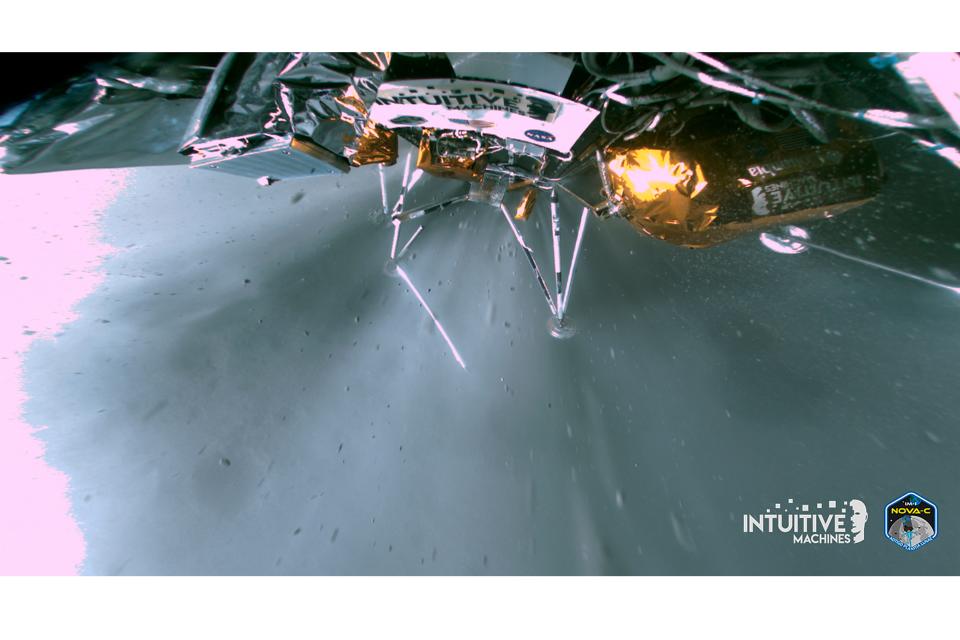'Goodnight, Odie:' Historic Odysseus lunar lander powers down after a week on the moon
The lunar lander Odysseus finally powered down Thursday one week after it became the first U.S. spacecraft to land on the moon since NASA's Apollo era came to an end five decades ago.
Ground controllers didn't expect the 14-foot-tall cylindrical lander to last nearly as long as it did when telemetry data beamed back to Earth indicated Odysseus had toppled onto its side Feb. 22 after skidding onto the moon's surface. But even from its sideways position, the uncrewed robot – built and operated by the space company Intuitive Machines in Houston – was able to transmit photos and data to Earth during its weeklong stay on the moon.
NASA, which helped finance the mission as its primary customer, has indicated that the data collected by its instruments aboard Odysseus will help as the space agency prepares to send astronauts back to the moon in the years ahead.
The lander, nicknamed "Odie" by its creators, sent its last photo Thursday afternoon before its solar power was depleted and lunar nighttime set in. The team hopes to wake Odysseus back up in about three weeks when the sun returns for solar noon, its highest point in the sky, and provides power-generating rays.
"Goodnight, Odie," Intuitive Machines said in a post Thursday on the social media site X. "We hope to hear from you again."
Odysseus lunar mission: See the best pictures from the lander's historic moon landing
Odysseus is first privately built lander to make it to moon

Odysseus' landing not only returned America to the moon for the first time since 1972, but it also marked the first time a commercial company built a spacecraft that made it to the lunar surface.
The landing, which came a week after Odysseus launched Feb. 15 aboard the SpaceX Falcon 9 rocket, saw Intuitive Machines accomplish a feat that another private company could not. Pittsburgh-based aerospace company Astrobotic Technology had called off its own moon landing attempt about a month earlier when its Peregrine lander began leaking a critical amount of fuel.
After separating from the SpaceX rocket, it took the six-legged Nova-C lander 48 minutes to reach its orbit before it established communication with ground control. The next day, it aced a crucial engine firing test and succeeded in orienting itself in the direction of the moon as it powered ahead.
Disaster struck, though, when telemetry data seemed to indicate the spacecraft failed to land on its six legs and instead came down on its side near Malapert A, a small crater about 190 miles from the moon's south pole region, where water ice is thought to be abundant.
NASA's Lunar Reconnaissance Orbiter later confirmed Odysseus' precise position, the southernmost location where any craft has ever landed on the moon, Intuitive Machines said.
Odysseus hit the lunar surface hard upon landing, sending it into a skid as the engines continued to fire. When the engines were throttled down, Odysseus slowly tipped over at a 30-degree angle on what flight controllers believe is a gentle slope.
Before the craft was powered down Thursday, flight controllers in Houston received and shared Odysseus' farewell image captured Feb. 22 that "showcases the crescent Earth in the backdrop, a subtle reminder of humanity’s presence in the universe," Intuitive Machines said.
Future NASA-sponsored moon missions ahead

For NASA, the IM-1 mission has laid the groundwork for the space agency to work with more commercial entities on future space endeavors – including Intuitive Machines IM-2 mission planned for the end of the year.
Intuitive Machines' IM-1 mission was part of NASA's Commercial Lunar Payload Services program, or CLPS. The space agency paid the company $118 million to take its scientific payloads to the moon, which they said yielded valuable insights about the unexplored south polar region.
Water ice in the region would not only help sustain astronauts on the surface, but it also would be a source of hydrogen and oxygen for rocket fuel.
NASA has a budget of $2.6 billion in contracts available through 2028 to pay private companies like Intuitive Machines to carry scientific payloads on private robotic landers bound for the moon. The excursions will pave the way for NASA's own Artemis moon missions, which will ultimately see the U.S. send astronauts back to the moon to establish a base of operations ahead of trips to Mars.
Eric Lagatta covers breaking and trending news for USA TODAY. Reach him at [email protected]
This article originally appeared on USA TODAY: Odysseus lunar lander powers down week after historic moon landing
